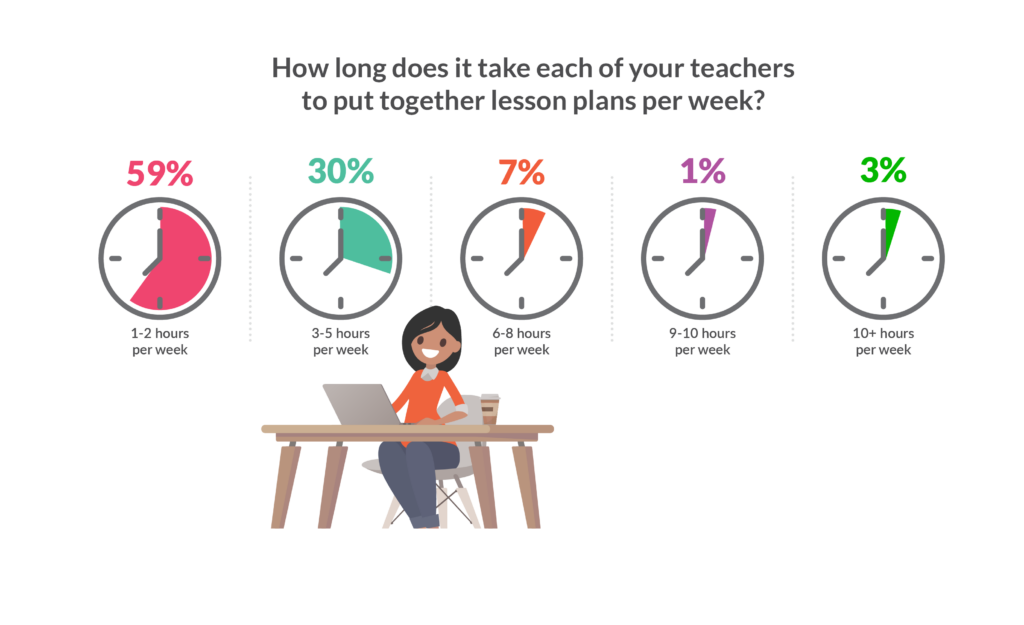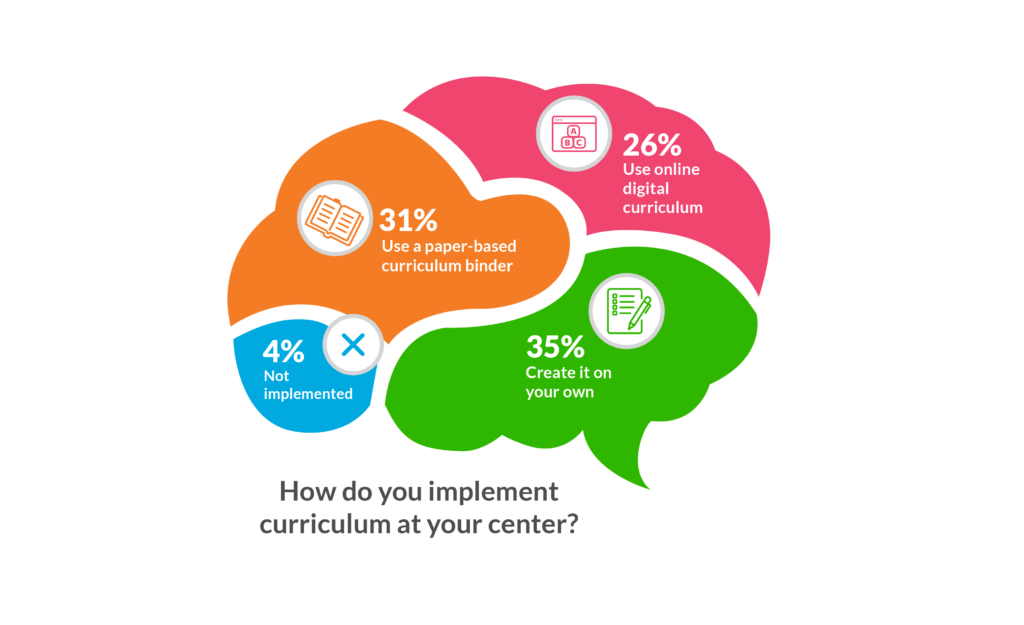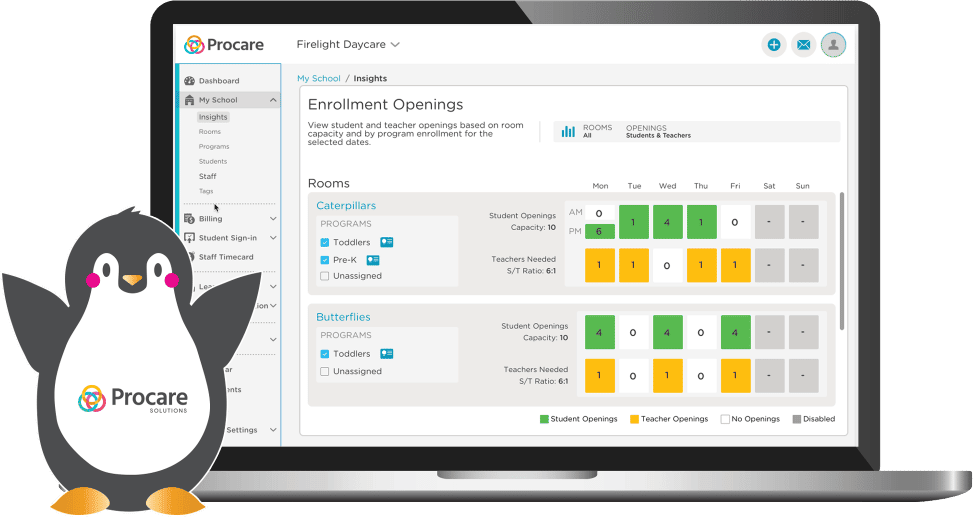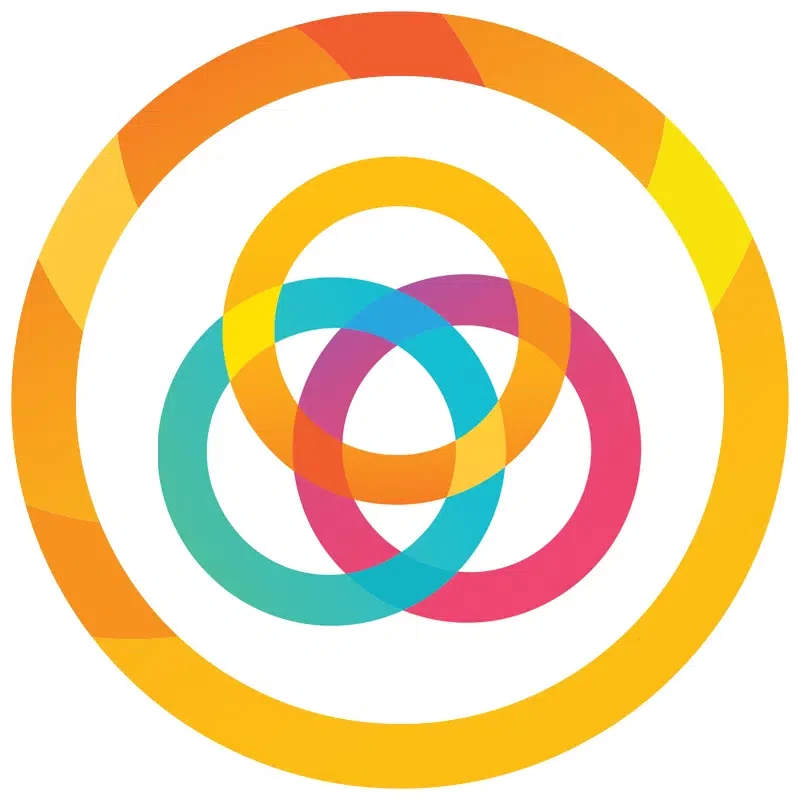A daycare curriculum is a plan for delivering effective early childhood education as part of your child care business. It specifies the knowledge, skills, behaviors and attitudes that children are expected to acquire. A daycare curriculum also includes details about activities and lesson plans.
Let’s go step-by-step to show you how to choose the best child care curriculum!
Should You Create Your Own Daycare Curriculum Or Use an Existing One?
Creating your own daycare curriculum is time-consuming and can lead to inconsistent approaches to learning in different classrooms and among teachers within your center. The long-term benefits of purchasing a curriculum designed for early childhood education include reduced preparation time and access to ready-made materials and training.
Investing in a professionally developed curriculum offers numerous advantages over creating one yourself, including ensuring you are providing a high-quality educational experience that is comprehensive and designed with early childhood development best practices in mind.
Curriculum designed by early childhood education experts who draw on current research and trends means the lesson plans will align with developmental milestones and cater to the varied learning styles of young children.
And it goes further than lesson plans! Curricula should include support materials such as assessments, training tools and enrichment activities so teachers can to fully address every aspect of child development without sourcing or creating additional materials
Let’s take a deeper look at nine steps that you can take to choose an amazing daycare curriculum that will help each child reach his or her full potential!
Nine Steps to Choose the Best Daycare Curriculum
1. Consider Your Personal + Organizational Values
As a starting point for choosing the best curriculum, think about your personal values, the values of your business and how those factors might influence the way you choose to teach.
Do you believe that kids should spend most of their time at play, or is direct instruction a better use of their time? Which kinds of activities do you feel are the most important or beneficial? What role should teachers play in the education process? When it comes to the practice of teaching, do you feel more comfortable as a lecturer or as a facilitator?
The answers to all of these questions can help you determine how you might choose a child care curriculum that’s consistent with your values and beliefs about education and effective for early learners.
2. Know Your Audience

When you’re setting goals for your curriculum as well as thinking about activities lesson plans, it helps to know your audience.
Here are five factors you may want to consider:
- Age: Lessons in your curriculum must be age-appropriate and take into account the physical and mental capabilities of the kids you’ll be teaching.
- Abilities: Depending on the ages of the kids you’re teaching, some may already be ahead (or behind) their peer group when it comes to academic ability. Identify kids who need extra help or enrichment.
- Developmental Stage: Child care providers should be aware of child developmental stages and age-related milestones. A daycare curriculum should be logically structured to help all child reach the next milestone in their personal development.
- Interests: Understanding which hobbies and interests are shared by your students can help you think about priorities in activities and lesson plans that get kids excited and engaged.
- Learning Styles: People have different ways of learning and absorbing information. There are eight identified learning styles including visual, aural, verbal and tactile learners. Understanding the preferred learning styles of your students can inspire you to find new ways of communicating information that can accelerate in your classroom.
3. Review State Early Learning Standards
As you begin to narrow your focus when choosing your curriculum and create lesson plans, check the state early learning standards where you live. These early learning standards describe the expectations for early childhood development from birth to 5 years of age and detail the milestones of knowledge, skill and behavioral development kids are expected to reach.
4. Cover the Four Developmental Domains
Your daycare curriculum should include lessons and activities that cover all four developmental domains. Instruction and practice in all four of these domains encourages children to develop healthy habits and a well-rounded personality, which are attributes that will help them succeed in the future.
Lessons or activities should be targeted at one or more of the following four domains of early childhood development.
- Cognitive: The process of learning to think, reason, solve problems and engage working memory.
- Linguistic: The process of learning to communicate through language, including reading, writing, speaking and listening.
- Physical: The process of learning and practicing movement skills, including gross and fine motor skills.
- Social-Emotional: The social-emotional learning domain includes a range of mental skills such as working memory, mental flexibility, empathy, impulse control and executive functioning.
5. Establish Annual Learning Goals + Target Outcomes
Once you have defined your educational values, analyzed your classroom audience and reviewed state early learning standards across all four learning domains, it’s time to document annual learning goals and target outcomes for your curriculum.
If this is your first time building a curriculum, you may want to base it on the early learning standards for your state. Most states go beyond the four learning domains by providing learning expectations for individual subject areas, including science, social studies, mathematics, language, creative arts, tech literacy, social/emotional health and physical education. You should be sure to at least cover all of the subjects that are recommended in your state’s published early learning standards.
6. Choose a Teaching Philosophy
Once you’ve determined what you plan to teach, the next step is figuring out how you will teach it. That means choosing from one of the established teaching philosophies, or combining one or more philosophies into a hybrid that’s unique to your center. Below, we list some of the most popular teaching philosophies:
- Play-based Learning – This teaching philosophy says that kids learn by playing, and the role of the teacher is to facilitate play experiences where kids have fun while developing their skills and competencies across the four learning domains.
- Academic Learning – In an academic learning environment, teachers function more like lecturers and disciplinarians than facilitators. Structures and routines are prioritized, and kids spend more time doing focused individual learning tasks, such as reading, drilling numeracy skills or completing art projects.
- Montessori – In a Montessori classroom, teachers function as guides who provide the resources and feedback that facilitate the learning process. Learning happens through play, which incorporates materials provided by the teacher but is self-directed by kids. Independence, personal responsibility, and self-discipline are emphasized in the Montessori classroom, helping kids develop into good citizens as they grow up.
- Reggio-Emilia Approach – In this approach, children are encouraged to take control of the learning process and develop new skills through direct experiences using the five senses. Children are encouraged to express themselves in different ways, and to explore their relationships with other kids and the external environment. Project-based learning is common in the Reggio-Emilia approach, and kids are encouraged to share their thoughts, perceptions and ideas, as well as ask questions to build their knowledge and understanding.
- Waldorf/Steiner Education – The Walford educational philosophy for child care is essentially that children learn through immersion in an environment that allows them to imitate practical activities. Classrooms are designed to resemble a child’s home, and kids are encouraged to participate in everyday activities like cooking, cleaning and gardening.
7. Plan the Daily Classroom Schedule

By now, you should be well on your way to creating a first draft of what you seek in a daycare curriculum.
You should have an idea of the learning goals you’d like to achieve, the educational philosophy you wish to follow, and how those decisions mesh with your personal values and the needs of your audience.
The next logical step is to plan the daily schedule, considering how your chosen educational philosophy will be put into action in the classroom each day. You’ll need to determine the following:
- What time do kids arrive in the morning? When does the day start?
- What are kids expected to do when they arrive at your child care center? What will be the routine?
- What time will kids receive lunch? When will they get a snack? Will there be a break for recess?
- What will “instruction time” look like? Will it be academic or play-based? How will you balance structured vs. unstructured learning in my curriculum?
- How many lesson plans will you need to fill each day with high-quality learning opportunities?
- Which subject areas must be covered, and how frequently?
8. Make Sure Assessments Are Part of Your Curriculum
By conducting assessments at regular intervals throughout the year, you can monitor a child’s growth and development effectively. This ongoing evaluation enables teachers to adapt their teaching strategies, curriculum, and interventions as needed, ensuring that each child continues to progress and flourish.
Software can track a child’s developmental growth, benefiting your center and the children you serve.
Procare Solutions is the only provider of child care management software to offer integrated proprietary early childhood assessments for children from birth to 5 years old at no additional cost with Vine Assessments.
Vine Assessments is an integrated framework that gives early childhood educators a way to clearly articulate the growth and development of children in their care. Its assessments align with standards in all 50 states. Teachers using Procare can tie their lessons and observations directly to the appropriate Vine Assessments indicator from the web-based software and Procare child care mobile app.
9. Create Individual Lesson/Activity Plans
If you choose a daycare curriculum that requires you to create lesson plans, consider how time-consuming that can be. The 2024 Child Care Management Software Industry Trends Report from Procare Solutions found that 30% of survey respondents said each teacher spends between three and five hours a week doing lesson planning:

Consider what must go into writing individual lesson and activity plans. Each lesson plan you create should include:
- The learning objectives for the lesson.
- The specific activities kids will engage in as part of the learning experience.
- A strategy for assessing student understanding and offering feedback to support student development.
- A sequenced plan for delivering the learning experience, from beginning to end.
- A realistic estimate of how long the lesson should take, allowing sufficient time for instruction, practice and for kids to ask questions. You may want to plan an extra activity in case you finish the lesson early.
- A few extra minutes scheduled to wrap up the lesson, answer any final questions, emphasize key information, and preview upcoming lessons or topics.
How a Digital Curriculum Designed for ECE Can Help!
A digital, 52-week curriculum program is essential for early childhood education centers, but the most recent trend report from Procare Solutions shows that more than one-third of centers create their own curriculum and 31% use a paper-based curriculum binder:

Procare Early Learning, in partnership with Learning Beyond Paper, is an all-digital curriculum specifically designed to meet the unique needs of educating children from infancy through pre-kindergarten. It’s an embedded, fully online curriculum program tailored to child care centers with a year-round program!
The integration with Procare makes this curriculum program easy to use. New content, training and tools arrive automatically! It’s designed so teachers of all experience levels can understand it easily.
No more recording your assessments on paper. The built-in assessment tool helps teachers observe and plan for individual children right from within the Procare platform on their tablet or mobile device. Procare also enables the ability to create custom assessments.
It includes more than 4,000 daily activities for infants, younger toddlers, older toddlers, preschoolers and pre-kindergarteners.
Procare is the only solution that can deliver the entire early childhood education ecosystem — lesson planning, lesson delivery within the classroom as well as assessment and parent engagement. Being able to do all of these with one platform simplifies classroom management and planning!
How much time and money could your child care center save using a digital curriculum designed for young learners? Enter your number of staff, number of students and type of program into our online calculator to see your potential time and money savings!




